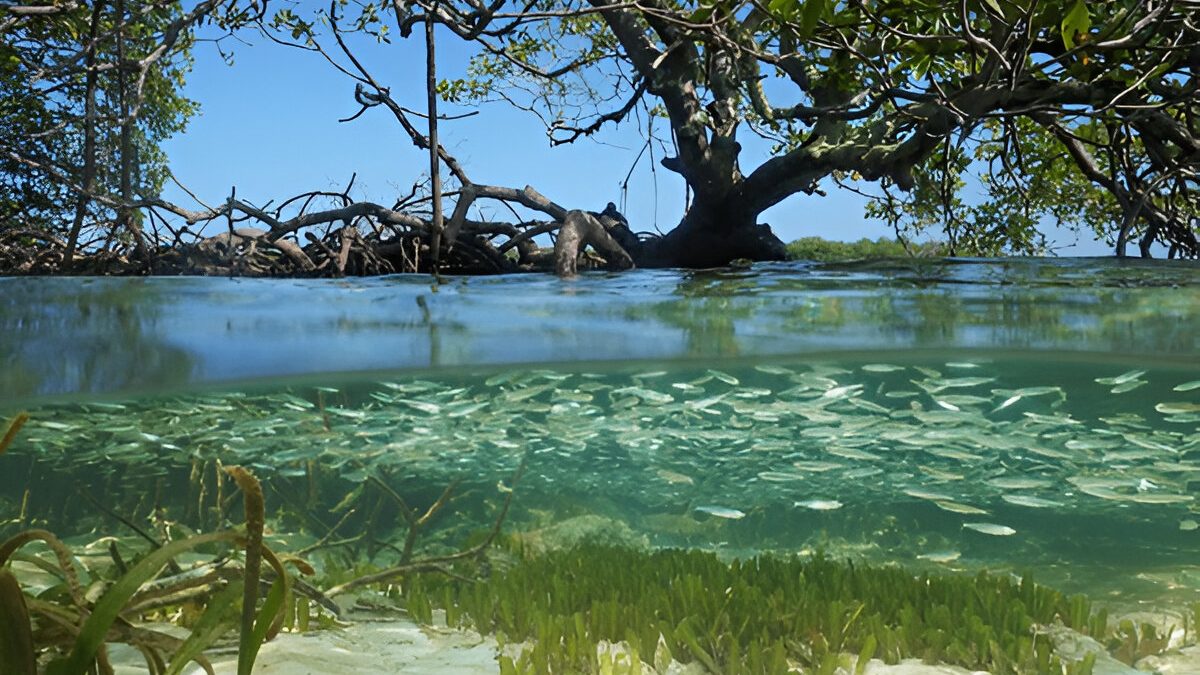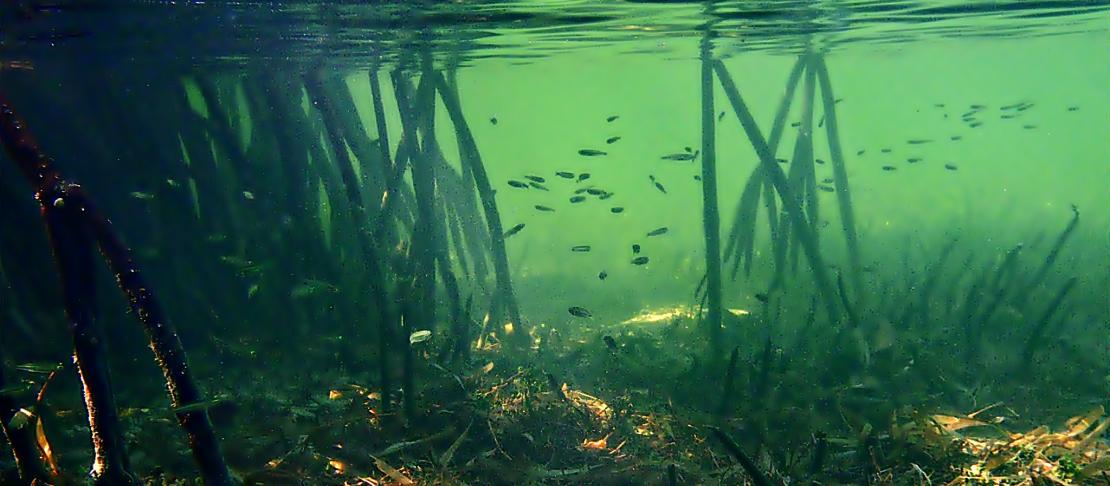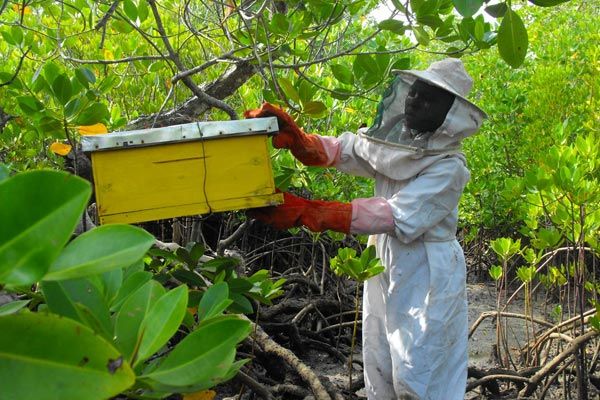Mangroves as Pillars of Food Security and Sustainable Economic Resources

Mangrove with tree above water surface and shoal of juvenile fish underwater (Photo Credit : Damsea)
Mangroves, forests that grow along tropical and subtropical coastlines, play a significant role not only in protecting the environment but also in providing natural resources that can be utilized by local communities. Their existence is crucial for coastal ecosystems and for the survival of many species that live nearby. Additionally, mangroves act as effective carbon sinks, helping to reduce the impacts of climate change. However, despite their numerous benefits, mangrove forests are now under threat from destructive human activities. Therefore, sustainable management of mangroves is essential to ensure their continued ecological and economic benefits.
Mangroves as a Source of Food Security
Mangrove forests have immense value in supporting food security for communities living along the coast. They provide various food sources, both directly—such as fish and shrimp—and indirectly through other products like the pedada fruit. The pedada fruit (Sonneratia spp.), for example, is rich in carbohydrates and can be processed into various nutritious traditional foods.

Pedada fruit (Photo Credit : NParks Flora&Fauna Web)
Moreover, mangroves help sustain fishery ecosystems. The roots of mangrove trees that grow in seawater offer shelter and breeding grounds for various types of fish and shrimp, which in turn serve as key protein sources for coastal communities. When external food supplies become difficult to access, mangroves serve as a reliable food source for local populations. Thus, mangroves not only help maintain ecological balance but also enhance food security for communities that depend on coastal natural resources.

Mangrove roots as shelter and breeding ground for fish and shrimp (Photo Credit : Phil's 1st pix)
Non-Timber Mangrove Products and Economic Opportunities
Beyond being a food source, mangroves also produce a variety of non-timber products with high economic value. These include mangrove honey, shellfish, salt, and handicraft materials made from mangrove parts. Mangrove honey, produced by bees that live around the mangrove trees, has a distinct flavor and is rich in health benefits. This honey can be marketed both locally and internationally.

A beekeeper harvesting mangrove honey from the coastal forest (Photo Credit : Watamukenya)
Shellfish that grow on mangrove roots are also valuable commodities for many coastal communities. Additionally, parts of the mangrove such as leaves and roots can be turned into high-value handicrafts. By utilizing these non-timber products, coastal communities can gain substantial additional income while maintaining the sustainability of the mangrove ecosystems.
However, to ensure that the use of non-timber products does not damage the mangrove ecosystem, careful and community-based management is essential. One proven model is Community-Based Mangrove Management (CBMM), where local communities are directly involved in the sustainable and eco-friendly management of mangrove forests and utilization of non-timber resources.
Challenges in Mangrove Management
Despite their great benefits, mangroves face several challenges that threaten their sustainability. One major issue is land conversion for industrial purposes, particularly for shrimp farming and other aquaculture activities. This has led to the destruction and loss of large areas of mangrove forest, resulting in the disappearance of many of their ecological functions.
In addition, rapid coastal urbanization has further encroached on mangrove areas, while climate change—causing rising sea levels—exacerbates the degradation of already damaged mangrove forests. Therefore, to preserve mangroves, management must be integrated and take both ecological and economic factors into account.
One solution to these issues is the integration of mangroves into silvofishery systems—a form of aquaculture that incorporates mangroves as part of the pond ecosystem. In this model, mangroves act as coastal protectors and natural water filters that improve the environmental conditions for fish and shrimp. This approach combines mangrove conservation with aquaculture, offering dual benefits to communities without harming the environment.
Case Study: Successful Mangrove Management
In several parts of the world, the implementation of community-based and sustainable mangrove management has yielded highly positive results. One success story is found in Matang, Malaysia, known as the largest sustainably managed mangrove forest area. Through an education center in Matang, local communities are empowered with knowledge on mangrove conservation and sustainable utilization. This center also provides training to produce non-timber products, such as mangrove honey and salt, which help improve local incomes.
Similarly, areas like the Sundarbans in Bangladesh demonstrate that well-managed mangroves can deliver substantial economic benefits, both through non-timber products and mangrove-based ecotourism. These successes show that involving communities in mangrove management can result in sustainable benefits, not only economically but also environmentally.
Conclusion
Mangroves are not only a crucial ecosystem for the environment, but also a highly valuable natural resource for coastal communities. In addition to serving as coastal protectors and carbon sinks, mangroves also offer food and non-timber products that can boost local economic wellbeing. With sustainable and community-based management, mangroves can continue to provide vast ecological and economic benefits without compromising their longevity. Through successful examples in Matang, Malaysia, and other locations, we see that community-driven mangrove conservation is an effective strategy to ensure their sustainability and continued benefits for future generations.
-Rika Novida

